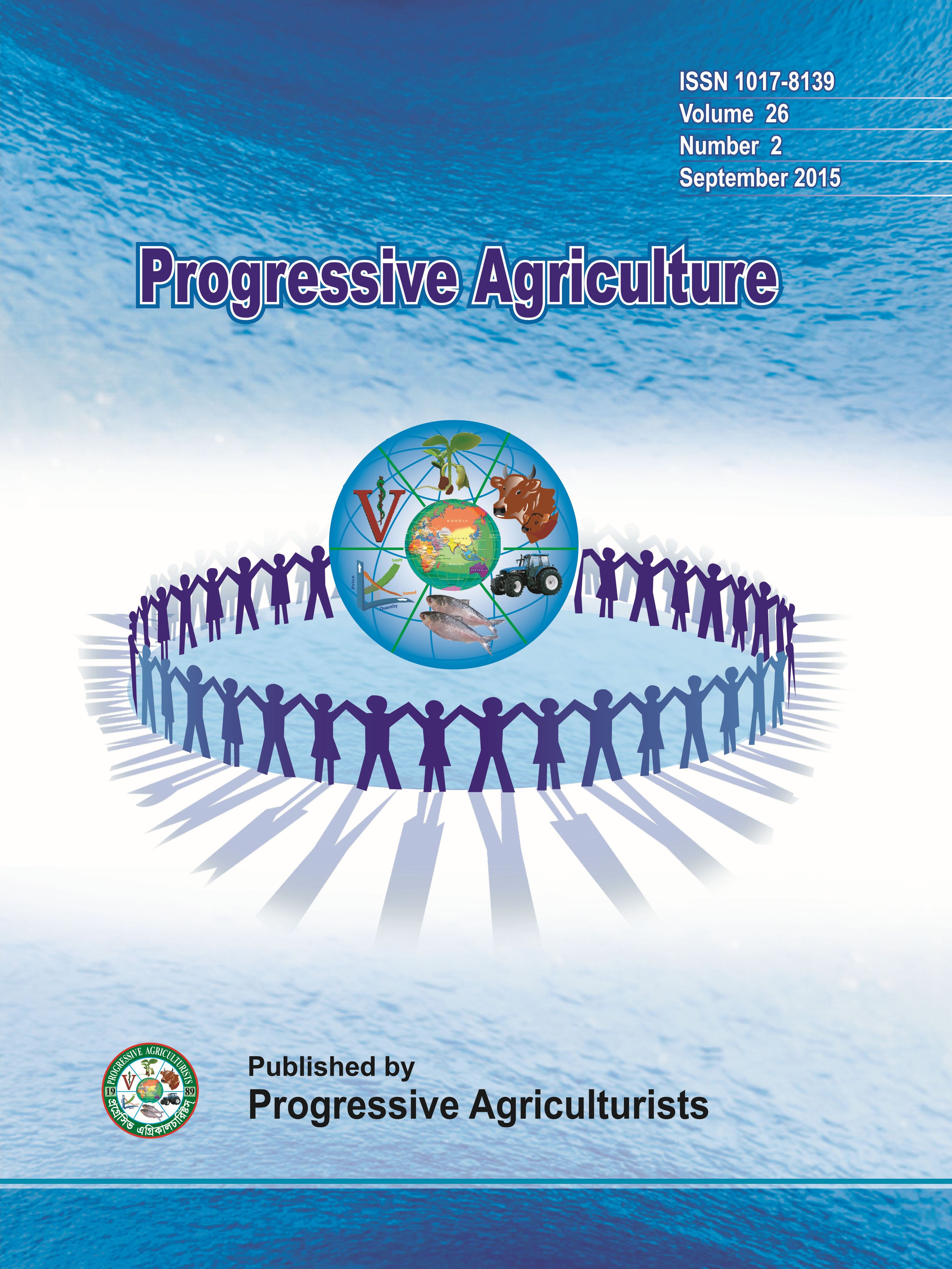Carbohydrate reserve and aerenchyma formation enhance submergence tolerance in rice
DOI:
https://doi.org/10.3329/pa.v27i3.30805Keywords:
Submergence tolerance, rice, carbohydrate reserve, root arenchymaAbstract
An attempt was made to evaluate the submergence tolerance in rice using four Aman rice varieties viz. FR13A (local flood resistant, check), BRRI dhan 51 (HYV flood tolerant, check), BR 5 (HYV, susceptible) and a local aromatic rice,Ukunimadhu (local susceptible). Twenty days old seedlings of the rice varieties raised in earthen pots were submerged under 90 cm water depth in a submergence tank for 12 days and data were recorded on plant height, tiller number, carbohydrate reserve and internal anatomical structure of roots of the submerged and control (ambient) plants. Under submergence treatment Ukunimadhu showed rapid stem elongation with taller plants than the HYVs which showed shorter plant height. Tillering pattern was almost similar both in submergence treated and control plants in all the varieties. Variation in carbohydrate reserve was negligible among the varieties at ambient condition but the submergence treatment brought significant variation in carbohydrate content in them. Submergence treated FR13A and BRRI dhan 51 had the highest sugar and starch conservation ability while BR 5 and Ukunimadhu had the lowest. The higher reserved carbohydrate in the tolerant varieties might assist them to regenerate their normal growth rapidly after desubmergence. The cellular morphology of root tissue showed that intensity of aerenchyma development in submergence treated FR13A and BRRI dhan 51 was more pronounced compared to the local aromatic rice Ukunimadhu and perhaps this cellular large aerenchymatous development might be associated with the submergence tolerance of FR13A and BRRI dhan 51 than the local variety, Ukunimadhu.
Progressive Agriculture 27 (3): 256-264, 2016
Downloads
150
161

